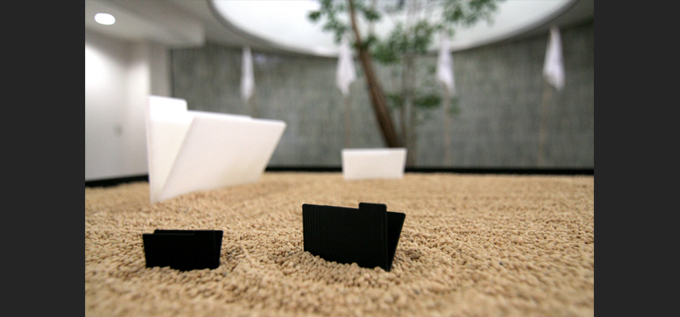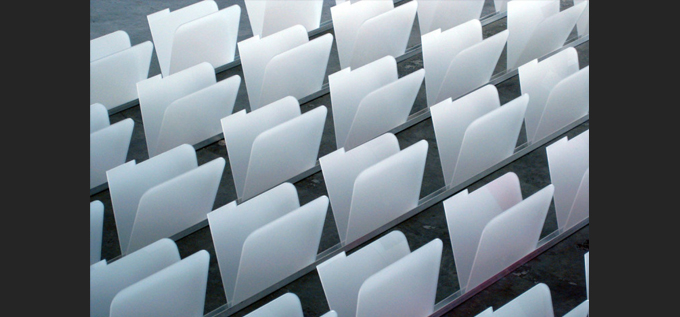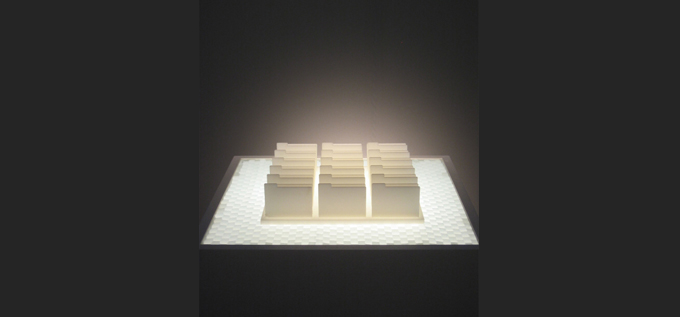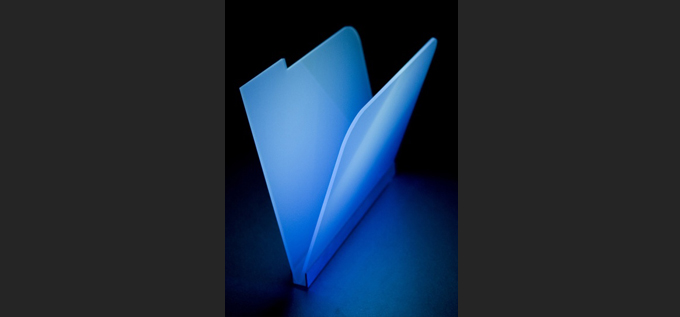IAN GWILT
My creative practice/research examines the phenomenon of compumorphic art through the form of the graphical user interface as a site of creative practice. In recent writings I have suggested that the term compumorphic art can be used to describe an emergent collection of artists and artworks that reference the visual language of the digital computer for creative stimulus, cultural commentary and aesthetic composition (Gwilt, 2011). Through a series of investigations over the last 10 years, I have explored how it is possible to challenge our understanding and expectations of the conventional computer interface when it is re-imagined as a creative object. In these interpretations desktop icons no longer function as navigational devices and can be removed from the confines of the computer monitor by varying scale, media and arrangement. These shifts in representation and form allow for the (d)evolution of the computer desktop metaphor back into object-based artifacts and hybrid constructs. In doing so, these reconfigured artifacts act as a lens for considering our relationship with computer technologies and the role they have taken in our social, cultural and creative environs. These differing manifestations of the computer desktop can also be used to examine the recent interest in the concept of ‘mixed-reality’ as a site of enquiry within creative digital media. My more recent work is concerned with the potential for creating physical artifacts based on data extracted from complex digital information systems. This work investigates how these tangible translations can change the way we interpret and respond to complex information, and seeks to reveal how the act of translating digital information into a physical environment can establish a different way of reading data through spatial, temporal and material variations that sit outside of the computer. I am also interested in the new making technologies that can be employed in the creation of these objects such as rapid prototyping.
(Gwilt, I. (2010 November) Compumorphic art – the computer as muse, paper presented at the first International Conference on Transdisciplinary Imaging at the Intersections between Art, Science and Culture. “New Imaging: transdisciplinary strategies for art beyond the new media”, Artspace, Sydney, Australia. http://blogs.unsw.edu.au/tiic/ accessed April 2011
BIOGRAPHY:
Dr Ian Gwilt is a Professor of Design and Visual Communication at Sheffield Hallam University, UK. He holds an MA in Interactive Multimedia, conferred by the University of Balears (UIB) in Spain, and the Royal College of Art (RCA) London. He has a Phd from the College of Fine Arts at the University of New South Wales examining the theory and practice of mixed-reality art. In the last 15 years he has shown interactive installations and digital work at a number of international new media events, galleries and exhibitions. His own practice/research is concerned with augmented reality and locative media, the graphical user interface as creative/cultural artefact, and exploring new forms and contexts for information design and post consumption visual communication.





